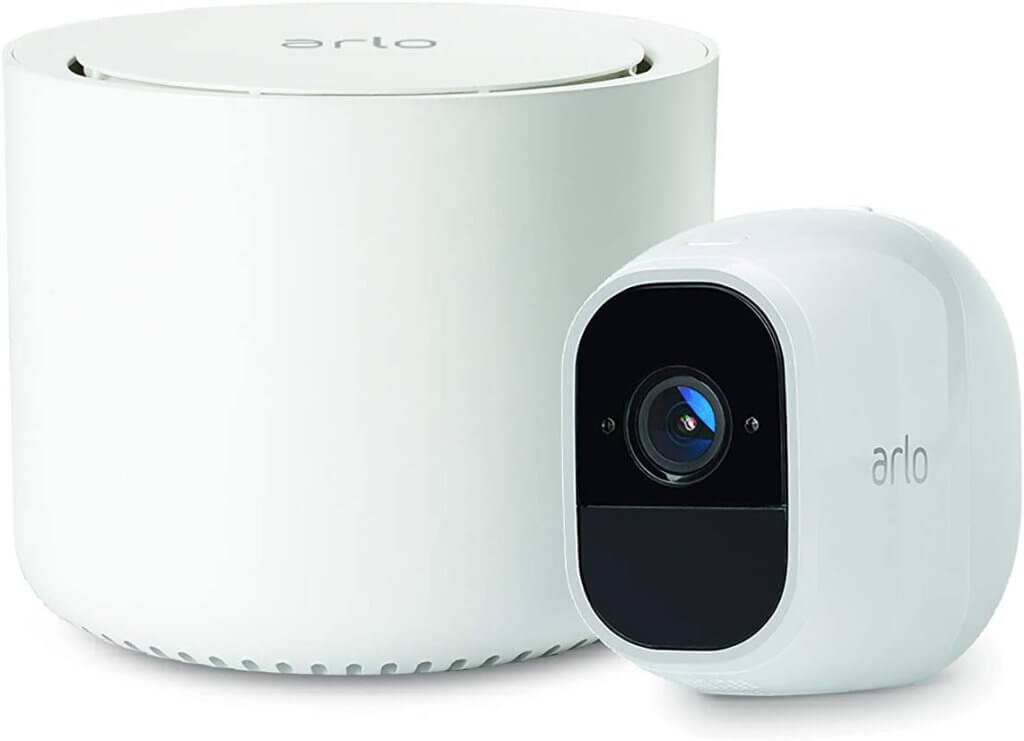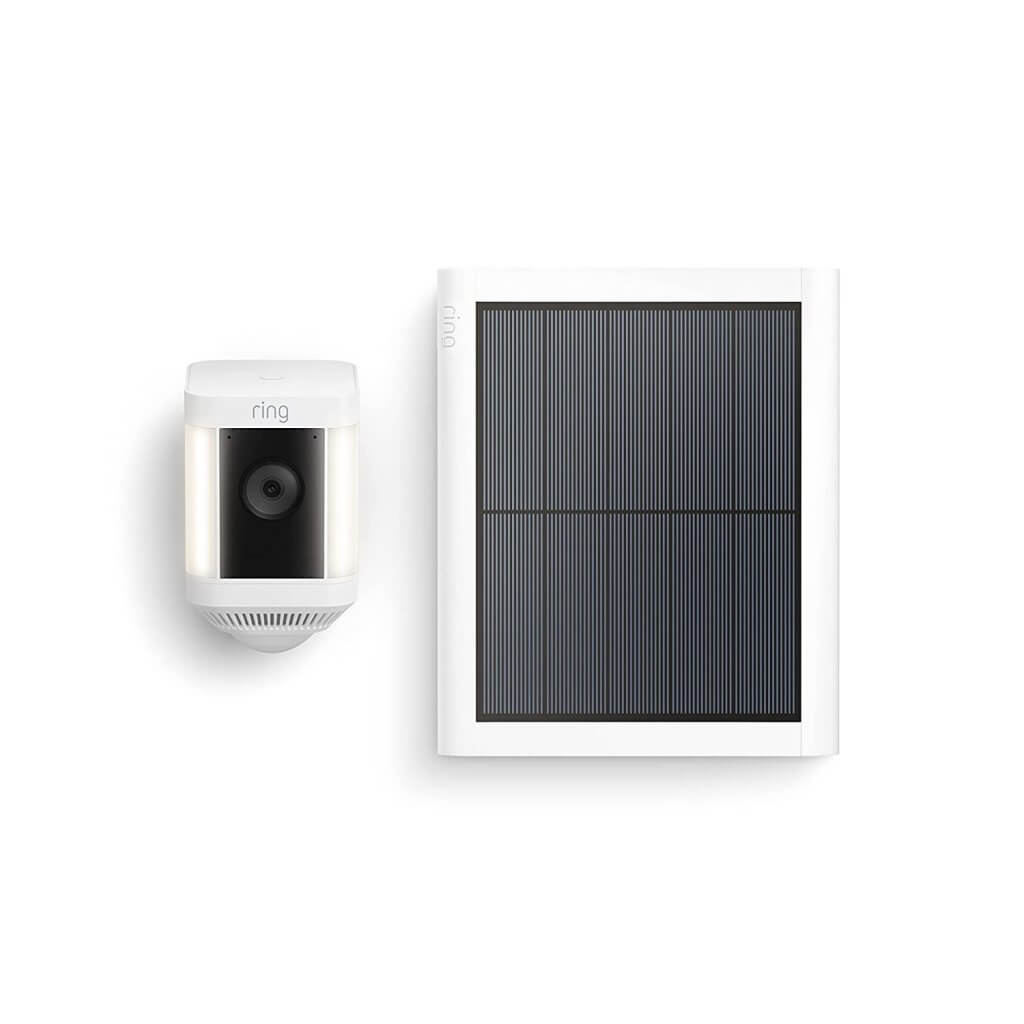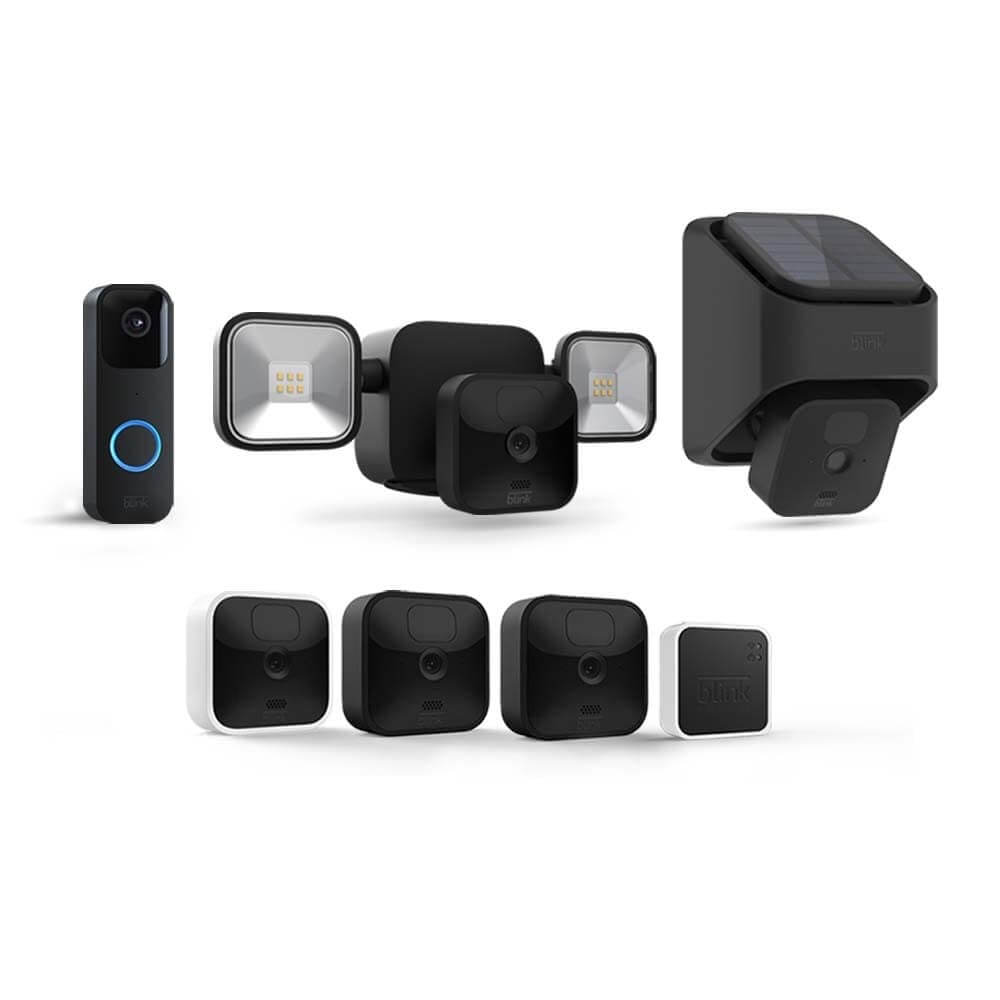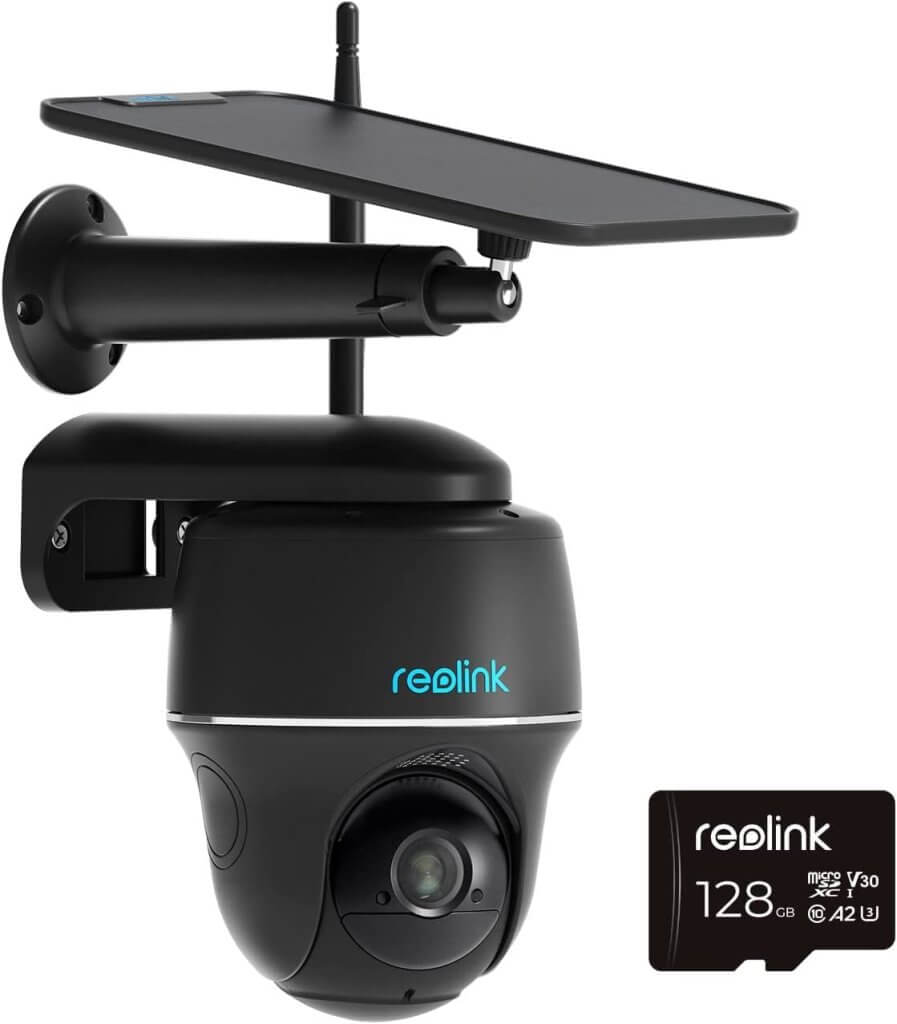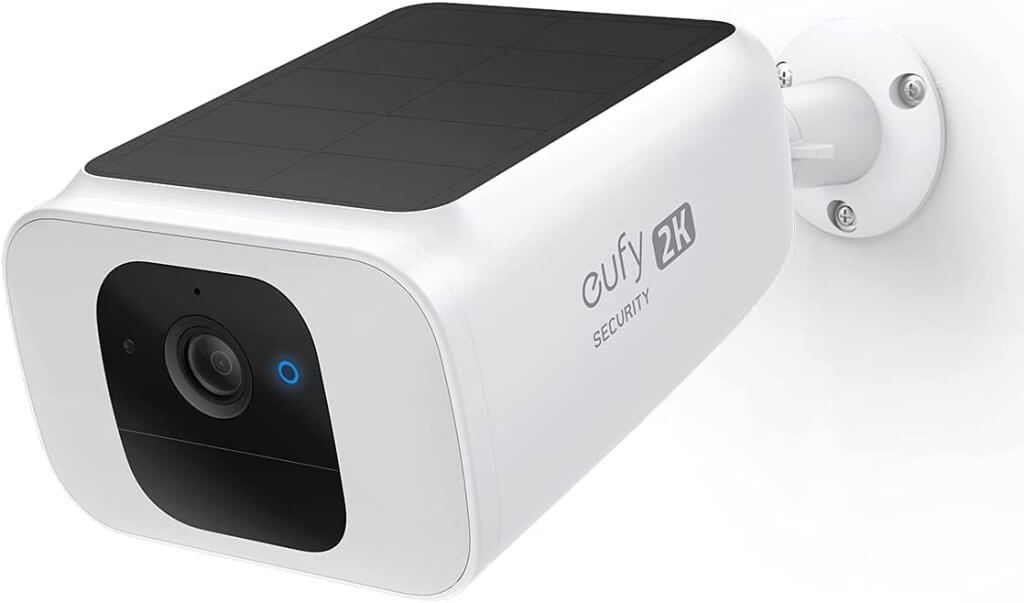Table of Contents
Types of Battery-Powered Security Cameras: Your Ultimate Guide
In today’s world, ensuring the safety and security of your home and property is a top priority. One of the most effective ways to accomplish this is by installing a security camera. Battery-powered security cameras have emerged as a popular choice due to their flexibility and ease of installation. In this article, I’ll share my personal experience and guide you through the various types of battery-powered security cameras available in the market.
Wireless Security Cameras
Wireless security cameras are an excellent choice for those who want to avoid the hassle of running cables. These cameras use a Wi-Fi connection to transmit video footage to a storage device, such as a cloud server or a local network video recorder (NVR). Some popular wireless security cameras include the Arlo Pro 3 and the Ring Stick Up Cam.
Pros:
- Easy installation
- No need for cables
- Remote access via mobile app
Cons:
- Requires a stable Wi-Fi connection
- May consume more power due to Wi-Fi
Wire-Free Security Cameras
Wire-free security cameras, like the Blink Outdoor, are completely cable-free and rely on batteries for power. These cameras use low-power wireless communication protocols to transmit video data, resulting in a longer battery life. You can place these cameras anywhere without worrying about finding a power outlet.
Pros:
- No cables required
- Extended battery life
- Easy to reposition
Cons:
- Limited features compared to wired cameras
- May require frequent battery replacement
Solar-Powered Security Cameras
Solar-powered security cameras are an eco-friendly option that uses solar panels to charge the camera’s battery. This type of camera is ideal for outdoor use, where sunlight is readily available. The Reolink Argus 2 is a popular example of a solar-powered security camera.
Pros:
- Environmentally friendly
- Reduced battery replacement
- Ideal for remote locations
Cons:
- May not work well in low-light conditions
- Higher upfront cost
Trail Cameras
Trail cameras, such as the Bushnell Trophy Cam, are designed for monitoring wildlife and capturing motion-activated events. They are battery-powered, rugged, and equipped with features like night vision and long-range motion detection. These cameras are suitable for those who want to monitor their property’s outskirts or observe wildlife.
Pros:
- Long battery life
- Designed for outdoor use
- Motion-activated recording
Cons:
- Limited features compared to other security cameras
- May not be suitable for monitoring indoor spaces
My Personal Experience
When I decided to install security cameras around my property, I opted for a wire-free security camera system. The flexibility and ease of installation allowed me to place cameras in areas that would have been difficult to reach with a wired system. I also appreciated the ability to reposition the cameras easily, which gave me the freedom to experiment and find the optimal camera angles for my property. Overall, I’ve been extremely satisfied with my choice of battery-powered security cameras.
Key Features to Consider When Choosing a Battery-Powered Security Camera: A Comprehensive Guide
In a world where safety is a paramount concern, the importance of battery-powered security cameras cannot be overstated. I’ve been using these cameras for years, and trust me, the peace of mind they offer is priceless. However, choosing the right camera isn’t as simple as picking the first one you see on Amazon. In this guide, I’ll walk you through the key features you should consider when shopping for a battery-powered security camera, sprinkling in my personal experiences along the way.
Battery Life
The very essence of a battery-powered security camera lies in its battery life. Some cameras, like the Arlo Pro 3, boast a battery life of up to six months, while others may need more frequent battery changes. Personally, I find that a camera with a long-lasting battery cuts down on maintenance and gives me one less thing to worry about.
Video Quality and Resolution
As the saying goes, the devil is in the details. And when it comes to security footage, the details matter! Cameras with high-definition (HD) or ultra-high-definition (UHD) resolution, such as the Google Nest Cam, provide clear and detailed footage that can make all the difference in case of a security event. My own security camera has 1080p resolution, and it’s been instrumental in helping me identify a pesky raccoon that was overturning my trash cans every night!
Field of View
The field of view of a camera determines how much area it can cover. I’ve found that cameras with a wide field of view, such as those offering a 130° or 180° view, can cover larger areas, reducing the number of cameras needed.
Night Vision
A security camera isn’t much good if it can’t see in the dark. A camera with night vision capabilities, like the Ring Spotlight Cam, is essential if you want to monitor your property 24/7.
Motion Detection and Alerts
Most modern security cameras come with motion detection and alert features. My camera sends me an alert on my smartphone whenever it detects motion, allowing me to react quickly to any potential security threats.
Two-Way Audio
Two-way audio is a handy feature that allows you to communicate with someone at your door even when you’re not home. It’s been particularly useful for me when delivery people come by and I need to give them specific instructions.
Weather Resistance
If you’re planning to install your camera outdoors, make sure it’s weather-resistant. Look for cameras with a high IP (Ingress Protection) rating, indicating their resistance to elements like dust and water.
Storage Options
Finally, consider how your camera stores footage. Some cameras offer cloud storage, like the Blink Outdoor, while others use local storage. Both have their pros and cons, so choose one that suits your needs best.
Top Battery-Powered Security Camera Brands and Models: A Personal Guide
As someone who has spent countless hours researching and testing battery-powered security cameras, I can attest that finding the perfect one can be a daunting task. But fear not! In this blog post, I’ll share my personal experiences and insights into the top battery-powered security camera brands and models to help you make an informed decision.
Arlo
Arlo is a well-known brand in the security camera industry, renowned for its innovative and feature-rich battery-powered cameras.
Top Model: Arlo Pro 3
- 2K resolution with HDR
- Integrated spotlight
- Color night vision
- 160° field of view
- Weather-resistant
- Two-way audio
- Smart home integration
Personal Experience: I’ve been using the Arlo Pro 3 for the past year, and its crisp video quality and motion detection capabilities have made it an invaluable addition to my home security setup.
Ring
Ring offers a wide range of battery-powered security cameras, with a strong focus on seamless smart home integration.
Top Model: Ring Stick Up Cam Battery
- 1080p resolution
- Motion-activated notifications
- Two-way audio
- Customizable motion detection zones
- 130° field of view
- Weather-resistant
- Compatible with Amazon Alexa
Personal Experience: My neighbor has the Ring Stick Up Cam, and the ability to customize motion detection zones has been a game-changer for them, preventing false alarms caused by passing cars or animals.
Blink
Blink is an Amazon-owned company that offers affordable and user-friendly battery-powered security cameras.
Top Model: Blink Outdoor
- 1080p resolution
- Two-year battery life
- Customizable motion detection
- Infrared night vision
- Two-way audio
- Weather-resistant
- Compatible with Amazon Alexa
Personal Experience: I gifted a Blink Outdoor camera to my cousin, and they were delighted with the camera’s ease of use and extended battery life.
Reolink
Reolink is a reputable brand that offers a range of battery-powered security cameras, including solar-powered options.
Top Model: Reolink Argus 2
- 1080p resolution
- Starlight night vision
- 130° field of view
- Weather-resistant
- Two-way audio
- Optional solar panel for continuous power
- Local storage (SD card)
Personal Experience: A friend of mine has the Reolink Argus 2 with a solar panel, and they have praised its reliable performance and eco-friendly power solution.
Eufy
Eufy is known for its smart home devices, including battery-powered security cameras with local storage options.
Top Model: EufyCam 2C
- 1080p resolution
- 180-day battery life
- Color night vision
- Customizable motion detection zones
- 135° field of view
- Weather-resistant
- Local storage (HomeBase 2)
Personal Experience: My colleague has the EufyCam 2C and appreciates the added privacy of local storage, as well as the camera’s sleek design.
Installation Tips and Best Practices for Battery-Powered Security Cameras: A Personal Guide
Over the years, I’ve installed a fair share of battery-powered security cameras. Through my hands-on experience, I’ve learned the best ways to optimize their performance. This blog post will provide you with useful tips and best practices to ensure a smooth installation process and maximum security coverage.
Select the Right Location
The location of your security camera can make or break its effectiveness. Look for spots that cover the most ground and focus on entry points, like front and back doors or ground-level windows.
Personal Experience: I placed my camera at a higher vantage point, overlooking my front door and driveway. This has provided an excellent view of anyone approaching my home.
Secure the Camera
Make sure your camera is secured firmly to avoid it being knocked down by weather or wildlife. Use the appropriate mounting hardware and check the camera’s stability regularly.
Personal Experience: My neighbor’s camera once got knocked down by a squirrel. After that incident, I made sure to secure my cameras well and regularly check them.
Optimal Positioning for Maximum Coverage
Position your camera to maximize its field of view. Make sure it’s not obstructed by trees or decorations. Adjust the camera’s angle to capture as much ground as possible.
Personal Experience: I had to reposition my camera a few times before I found the optimal angle. Now, it covers my front yard, driveway, and the street, providing comprehensive coverage.
Proper Battery Maintenance
Regularly check your camera’s battery level to ensure continuous operation. Consider using rechargeable batteries to save cost and reduce waste.
Personal Experience: I set reminders to check my camera’s battery level every month. This way, I never run into the situation where my camera stops working due to a dead battery.
Integrate with Other Smart Home Devices
Integrating your camera with other smart devices, such as smart locks or smart lights, can enhance your home’s security.
Personal Experience: I integrated my camera with my smart lights, so when motion is detected at night, the lights automatically turn on, deterring potential intruders.
Regularly Update Your Camera’s Firmware
Firmware updates often include improvements and security patches. Make sure your camera’s firmware is always up to date.
Personal Experience: I once had a minor issue with my camera’s motion detection feature. After updating the firmware, the issue was resolved.
Respect Privacy Laws and Norms
When installing your camera, make sure you respect the privacy of your neighbors. Do not point your camera towards their property without their consent.
Personal Experience: Before installing my cameras, I had a discussion with my neighbors to assure them that the cameras were positioned to only capture my property.
Frequently Asked Questions about Battery-Powered Security Cameras: A Personal Perspective
Over the years, I’ve had countless discussions about battery-powered security cameras with family, friends, and colleagues. Inevitably, a few questions always seem to come up. Here, I’ve compiled some of these frequently asked questions, complete with answers based on my personal experience and research.
1. How long do the batteries typically last?
Battery life depends largely on the brand and model, as well as how often the camera records footage. Some models boast a battery life of up to two years, like the Blink Outdoor, while others might require more frequent changes or recharges.
Personal Experience: With my camera, I’ve found that the battery lasts approximately six months with regular use.
2. Are battery-powered security cameras weather-resistant?
Yes, most battery-powered security cameras are designed to be weather-resistant and can withstand conditions like rain, snow, and heat. However, it’s always good to check the specifics for your chosen model.
Personal Experience: My camera has weathered several storms and a couple of heatwaves without any problems.
3. What kind of video quality can I expect?
Most modern security cameras offer HD (1080p) or UHD (4K) video quality. Some models even offer additional features like color night vision and HDR.
Personal Experience: My camera records in 1080p, which has provided crystal clear footage, even in low light conditions.
4. Can I view the camera footage on my phone?
Absolutely! Most battery-powered security cameras allow you to view live or recorded footage through a mobile app. Some even send alerts to your phone when they detect motion.
Personal Experience: I’ve found the ability to check my camera footage from anywhere incredibly convenient. The motion alerts have given me peace of mind, especially when I’m away from home.
5. Do battery-powered security cameras require a subscription service?
While some brands do offer additional features through subscription services, many battery-powered security cameras work perfectly well without a subscription. It’s important to research this aspect before making a purchase.
Personal Experience: I use a camera that offers optional subscription services. However, I’ve found that I get all the functionality I need without a subscription.
6. Can battery-powered security cameras integrate with smart home devices?
Yes, many security cameras can integrate with other smart home devices. This can range from voice assistants like Amazon Alexa or Google Assistant, to smart locks or lights.
